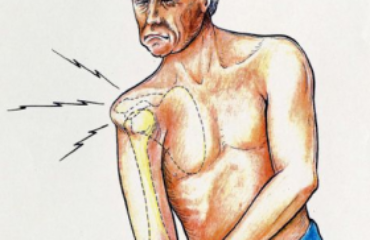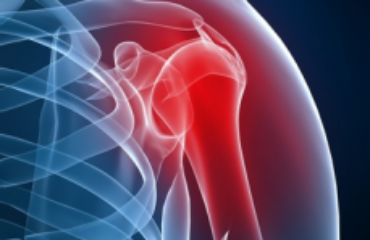The refinement of arthroscopic procedures has led to new advancements in the treatment of shoulder labral tears. Common across all age groups, labral tears have the potential to cause shoulder instability and loss of strength and movement. Patients giving a try to the advanced treatment options for labral tears have the benefit of early recovery, accelerated rehabilitation, and complete restoration of shoulder strength.
What is shoulder labral tear?
Shoulder labrum tear occurs when the fibrocartilage or labrum in the shoulder socket is torn or damaged. Labrum keeps the rounded head of the upper arm fixed inside the glenoid or shoulder socket stable. A type of rubbery tissue it is attached to the shoulder socket rim, where the ball shaped humerus head fixes into the depression (glenoid) in the shoulder blade.
Any injury to the labrum makes it frayed and finally tears appear. The tears may be due to wear and tear that comes naturally with aging. It may also because of injury and stress following pulling or pushing of the arm. Other factors that contribute to shoulder labral tears include car accident, repetitive overhead activity, and shoulder dislocation.
How do shoulder labral tears occur?
Based on their location, shoulder labral tears can be of three categories.
- Superior Labrum Anterior and Posterior or SLAP tears when top of the labrum is damaged
- Bankart tears on the front part due to dislocation of the shoulder
- Posterior labral tears that occur in the back of the shoulder, most commonly the area around the rotator cuff
What are the causes of shoulder labral tears?
Shoulder labral tears occur in various ways. Any injury may cause the cartilage to be caught between the upper arm ball and the socket edges. This leads to chronic inflammation and tears appear as the labrum remains frayed. Flap tissue movement in and out of the socket under stress is another reason of labral tears.
Repetitive stress or sudden trauma caused by strenuous activities involving the shoulder also cause labral tears to emerge. Injuries following slip and fall, forceful or continued overhead activities, and sports injuries. The force caused pushes the labrum off the socket and damages it. However, the most common cause of shoulder labral tears is aging. With age the labrum wears out and tears appear.
What are the symptoms of shoulder labral tears?
- Pain in the shoulder joint
- Unstable shoulder
- Locking and catching sensation in the shoulder joint
- Limited overhead activities
- Loss of shoulder strength and range of motion
What types of treatment options available for shoulder labral tears?
Depending on the causative factors and extent of pain and disability, the treatment is prescribed for shoulder labral tears. There are both surgical and non-surgical treatment options and these are recommended based on the individual patient requirement.
Do all for shoulder labral tears require surgery?
When there are clear signs of tears in the labrum, doctors suggest surgical treatment to fix shoulder labral tears. Labrum is connected to many tendons and ligaments and plays a significant role in ensuring the stability of the shoulder joint. Any tear in it causes shoulder instability and limits the movement and strength of the shoulder. Surgery is the best treatment option for shoulder labral tears to avoid such problems.
However, those with limited and non-serious injuries are treated with non-surgical treatment methods. Rest and icing helps resolution of minor tears. But if the condition does not improve despite non-surgical treatment, patients are recommended to undergo surgery to repair shoulder labral tears.
Shoulder labral tears repair surgery is widely prescribed for athletes and sports person who needs a quick and swift resolution so that they can continue their careers. It is also a must for those with recurrent shoulder dislocations.
What are non-surgical treatment options available for shoulder labral tears?
- Anti-inflammatory medications to control pain and inflammation
- Corticosteroid injections to inhibit pain and inflammation
- Physical therapy
- Rest and icing
These options have limited impact and only for minor tears.
What are surgical treatment options available for biceps tears?
Arthroscopic repair is the most popular and best available treatment option for shoulder labral tears. Arthroscopic debridement is the most effective way to treat minor, frayed tears while arthroscopic repair is for larger and more damaging labral tears. Minimally invasive, it provides faster healing, zero-complication recovery, and quick return to pre-injury life. A tiny camera and miniature instruments are inserted into the shoulder joint through small incisions and labral tears are repaired in an outpatient setting.
Surgeons use a nerve block and administer general anesthesia to the patient. A small incision is made to insert arthroscope, a tube shaped miniature camera. It relays visuals that help assess the extent of shoulder labral tears. Two to three small incisions are made to insert specialized surgical instruments that perform the repair.
Surgical treatment for shoulder labral tears performs different tasks. In case of SLAP tears, it carries out labral debridement. For older patients, bicep tendons attached to the labrum are released to reduce pain and popping sensation. Arthroscopic surgery shoulder labral tears also reattaches the torn part of the labrum using sutures.
Patients recover completely in 6 to 8 weeks and the shoulder joint regains its pre-injury strength and range of motions. They are restricted to avoid certain activities during the recovery period.
References
Labral Tears. Internetional Society of Orthopaedic Surgery & Trauma website. Available at: http://www.orthogate.org/patient-education/shoulder/labral-tears.html.
Wilk KE, Macrina LC, Cain EL, et al. The Recognition And Treatment Of Superior Labral (Slap) Lesions In The Overhead Athlete. International Journal of Sports Physical Therapy. 2013;8(5):579-600.
Keener JD, Brophy RH. Superior labral tears of the shoulder: pathogenesis, evaluation, and treatment. J Am Acad Orthop Surg. 2009 Oct ;17(10):627-37.
Aydin N, Sirin E, Arya A. Superior labrum anterior to posterior lesions of the shoulder: Diagnosis and arthroscopic management. World Journal of Orthopedics. 2014;5(3):344-350.
Rangavajjula A, Hyatt A, Raneses E, et al. Return to play after treatment of shoulder labral tears in professional hockey players. Phys Sportsmed. 2016 ;44(2):119-25. Epub 2016 Apr 4 .
Caldwell PE, Pearson SE, D’Angelo MS. Arthroscopic Knotless Repair of the Posterior Labrum Using LabralTape. Arthroscopy Techniques. 2016;5(2):e315-e320.
Brockmeier SF, Voos JE, Williams RJ, et al. Outcomes After Arthroscopic Repair of Type-II SLAP Lesions. The Journal of Bone and Joint Surgery American volume. 2009;91(7):1595-1603.



